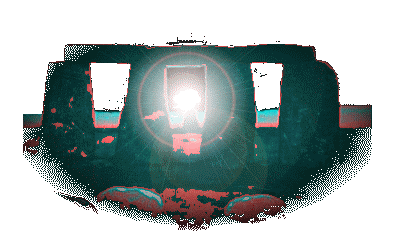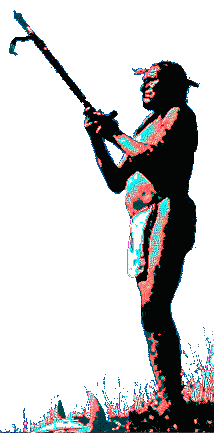
NCNatural Digest's Summer Skies

|
For millenia the main way of determining time and the seasons has been through astronomical observation of the movement of the sun and stars. The key yearly features are the equinoxes, when day and night are of equal length and the solstices, when either the day or the night is at its maximum length. |
This time of year we are concerned with the summer solstice. The Sun, which has been rising and setting a little farther north along the horizon each day since Decembers' winter solstice, stops its advance and begins to move back southward. The summer solstice is sometimes called "Midsummers Day", but we know it as the first day of summer. The actual time of the solstice varies from year to year, but for most practical purposes, we celebrate June 21 as the first day of summer. The real time of summer solstice for 1997 is June 21 at about 4 AM Eastern Daylight Time. MidSummer's Day is usually celebrated as June 23.
Each solstice is a pause between a change in nature. The solstice provides an appropriate time for humans to also pause, take stock and strive to come into harmony with the changing flow of natural forces. Summer being a time of plenty is usually an occassion to celebrate individuality and creativity. It is recognized as a time for completing what has gone before and for establishing intentions for the time to come.
Sir James Frazer in "The Golden Bough", documents many historical
instances of Fire Festivals on MidSummer's Eve throughout eastern, western
Europe and North Africa. (He published the book in 1922, so you may not find
many currently being practiced.) In the past, many bonfires were lit on
hilltops, on roads or other clearings. Prayers were offered that the crops
would grow as high as the flames leaped. People looked at the flames through
garlands of wildflowers and herbs in hopes of strengthening their eyesight.
Often cattle were driven through the flames to purify and protect them. For
basically the same reasons people also jumped through the flames, with the idea
that the higher the leap, the better the fortune.
 Wheels wrapped
in straw were set on fire and sent rolling down hill. The distance the flaming
wheels travelled was supposed to be an indication of the wealth of the harvest
to come.
Wheels wrapped
in straw were set on fire and sent rolling down hill. The distance the flaming
wheels travelled was supposed to be an indication of the wealth of the harvest
to come.
In many areas the midsummer mark was a time to extinguish the old fires and rekindle new ones that would burn through the year. There was an effort to clear up debts and unfinished business to coincide with this and prepare for the new cycle. Among southeastern Indian tribes, the Green Corn Ceremony, which is celebrated at various times during the summer depending on the corn, is also a time when the old fires are extinguished and new ones ignited from a single fire that provides the source for all of the others.
Many observational points around the world are set up to mark the summer solstice. The most famous of these is Stonehenge in England, a site of Druidic solstice celebrations. Evidence of solar observations are found in eastern North American archaic sites at Cahokia Mounds in East St. Louis, Illinois, at The Incinerator Site in Dayton, Ohio and possibly at Crystal River Mounds in Florida.
 |
 |
 |
 |
Contact
[email protected]
Web Site Design and Graphics ©
NCNatural/Tim
Treadwell